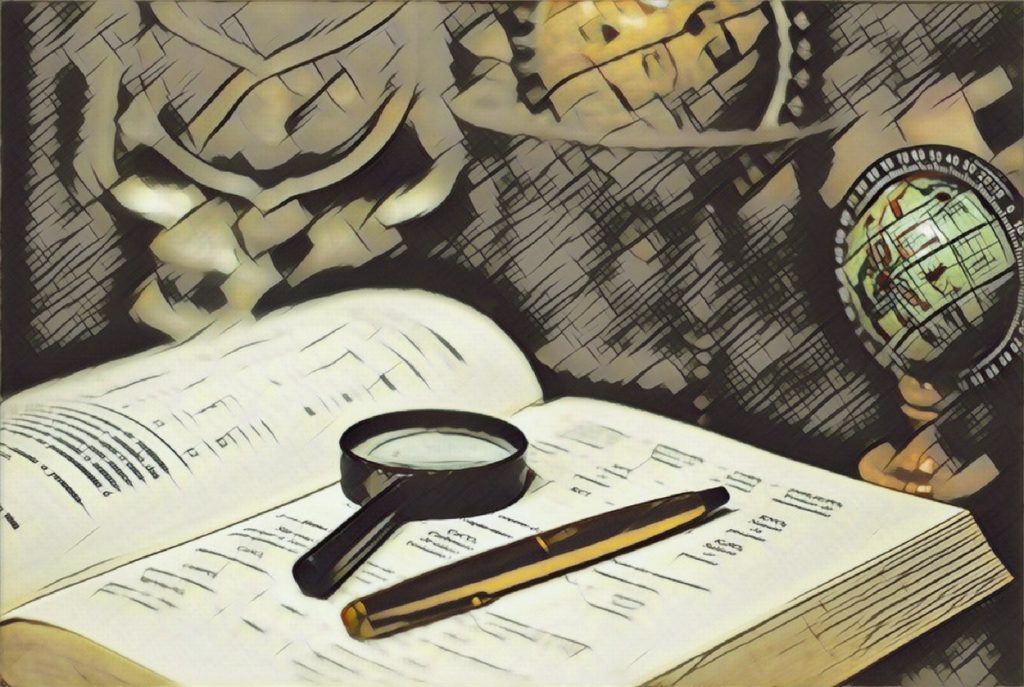Video’s description: How to Read a Paper Efficiently (By Prof. Pete Carr)
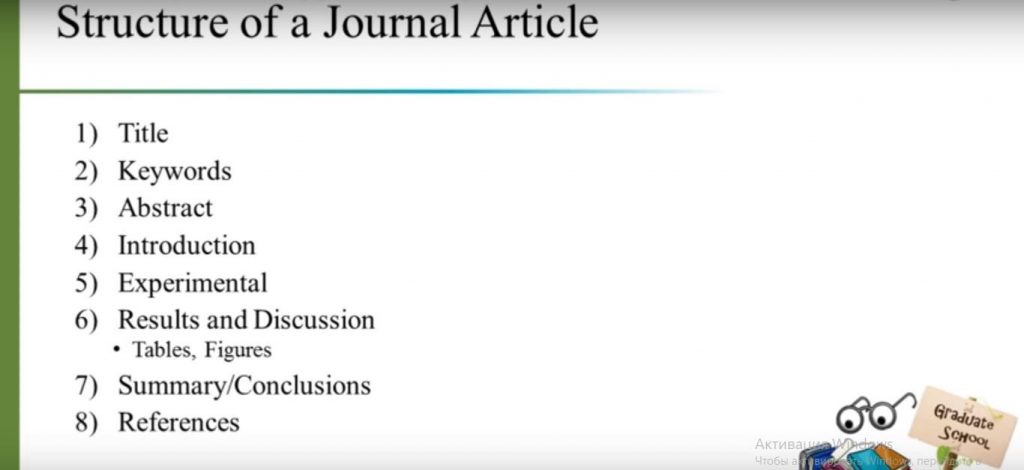
On this first slide that I want to show you is an outline of the way a typical scientific paper is organized. And I think most beginning students instinctively start reading a paper in order as the paper is printed for instance they read the title then they go on to the abstract then they read the introduction and so on and so forth working their way from the beginning to the end of the article. Don’t do this. This is not a good use of your time.
There’s a better way to do things which is what I’m going to tell you about today. Let me jump in here at this point and tell you about a fairly simple algorithm if you will see how to get the most out of a paper with the least effort. And I think to do this you have to think of reading a paper as a two-phase process. In the first phase you’re surveying the paper, the article, to see if it’s really worth investing a lot of time in. And this is the way you keep up with what’s going on in the literature. You’ll probably have some sort of service that provides you with papers based upon keywords, which are by and large taken from the abstract of the paper. So, the first thing to keep in mind is that you’re allowed to stop this process at any point when you become disinterested in going further. Next, you will look undoubtedly at the keywords and the title of the paper if these don’t interest you at all you stop.
Next thing to look at really is the abstract. It’s the most important part of the paper for getting acquainted with the paper. But next I think you want to jump to the conclusions you don’t read the intermediate steps, you don’t look at the experimental and the introduction and the results and discussion. Look at the conclusions because if the conclusions are not relevant to you, probably you don’t want to go any further.
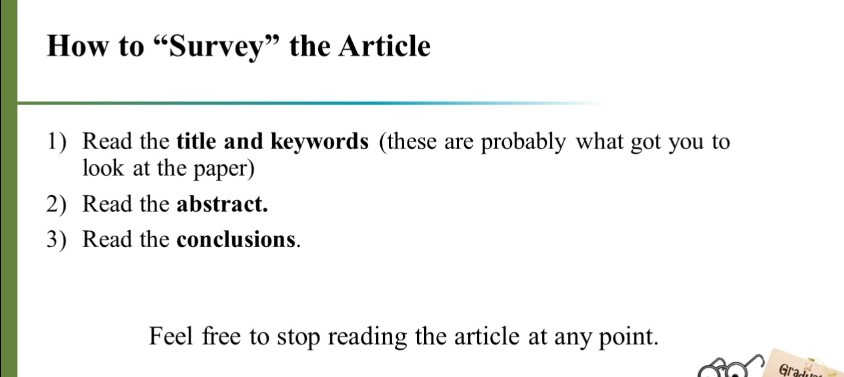
So that this basically at this point you’ve surveyed the paper and you know whether or not it’s really worth your while to invest any time on it. The next thing that I think it’s best to do again because it’s fairly fast is to take a good look at the tables and the figures and the captions because you can do this quickly and it will tell you the main things that went on when the scientists did their work. And again, it will help you decide do I really want to dig into this paper or not. If that’s the case and you want to dig in, then the place to start is the introduction and this unit have to start reading seriously. And the introduction will provide you with essential background information that’s one of the roles of the introduction another role of the introduction is to let you know why the authors of the paper did the particular study.
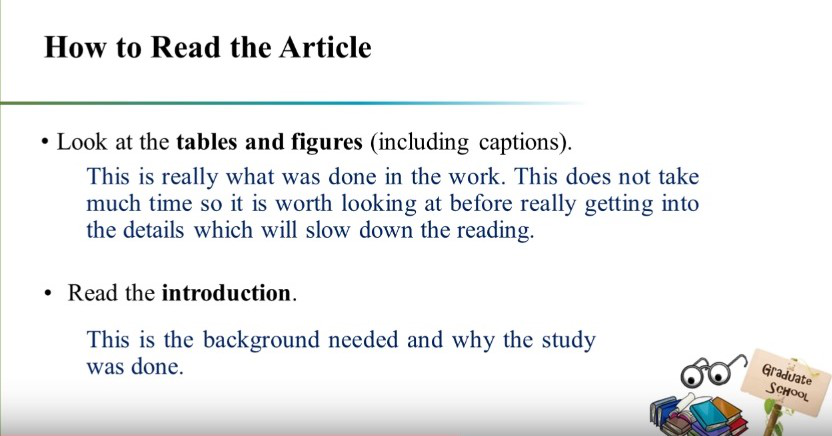
And I think these are important things for you to know before digging in. The real heart of a paper is the results and discussion section of the paper. Here’s where you’re going to spend most of your time and going through the paper. Finally, at this point you may decide to stop, you’ve had enough, but if the paper is really extremely relevant to what you are currently working on, then it’s time to dig very deeply and get into the details of the experimental section of the paper. And this is where you really learn what the authors actually did but more importantly it’s where you learn how they did things and you may need that level of detail in your own work.
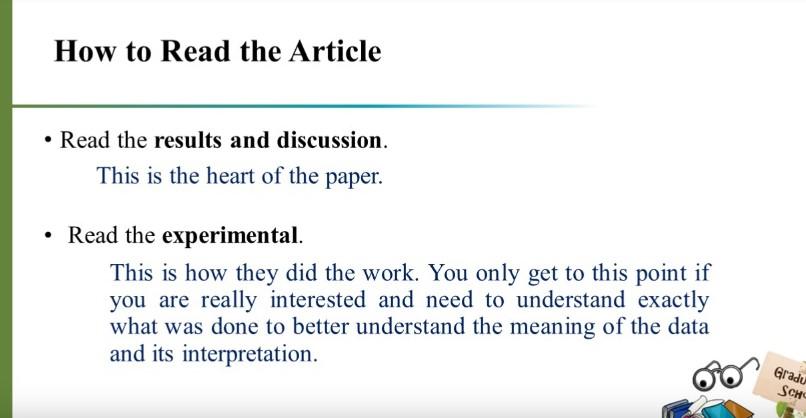
Once you’ve done reading the paper, you can stop. However, I think it’s a really good idea to develop some kind of system where you take some notes on the paper. These notes aren’t going to serve you any good next week or maybe even next month, but down the road maybe when you start to write your own first paper having some notes on these papers that you’ve read will be very beneficial and will really save you a lot of time. It’ll tell you which papers you should reread before you start writing which papers you don’t need to include in as references in your own manuscript because they’re not relevant. So, taking some notes when you can as you finish reading a paper is a really good idea. And these notes should be in a notebook or in some system and not simply written on the PDF of the paper because that you can’t collect those notes very easily. You want these notes readily accessible for instance on an index card or a bunch of index cards so that you can flip through them quickly and take a look at all the all the relevant papers.
There’s an old saying, I think it’s Chinese in origin, that “The faintest writing is better than the best memory.” And in the course of my time involved in science, I am here to tell you that’s that old saying is really right. These are the main things I wanted to leave you with. Reading a paper or surveying a paper may take 30 seconds or if it’s really relevant it may take several days, several hours or even the major part of a day to go through the entire manuscript and really come to grips with it.
That’s about all I can tell you, it’s a skill that has to be learned to be productive in graduate school and productive as research scientist.
